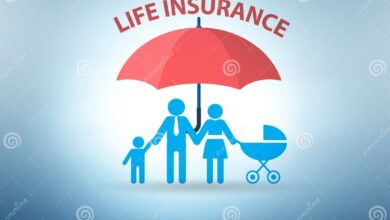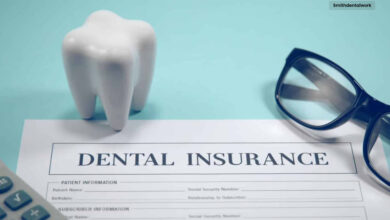Who Files an Insurance Claim in a Car Accident?

When the unexpected happens on the road, and you find yourself involved in a car accident, one of the most pressing questions that may arise is, “Who files an insurance claim?” This question is pivotal, as it determines how compensation and coverage will be processed after the accident.
In this comprehensive guide, we’ll delve into the intricacies of insurance claims in car accidents, shedding light on the different parties involved and their roles in the process. Whether you’re a driver, passenger, or a bystander, understanding this process is crucial to ensure a smooth resolution in the event of an accident.
The Driver’s Responsibility
First-Party Insurance Claims
Let’s begin with the driver of the vehicle. If you are the one behind the wheel during an accident, the responsibility of filing an insurance claim usually falls on you. This is referred to as a first-party insurance claim. Your own insurance policy, specifically your liability coverage, will be the primary source of compensation for the damages incurred.
In most jurisdictions, having at least liability insurance is mandatory, as it helps cover costs associated with the injuries or damages you may cause to others in an accident. However, the extent of coverage can vary widely depending on the specific policy you hold. It’s essential to be well-versed in the details of your insurance coverage, including the limits, deductibles, and types of damages it covers.
When involved in an accident, your first step should be to contact your insurance company and report the incident. They will guide you through the claims process, which typically involves providing details about the accident, photos of the scene, and any relevant documentation such as police reports or medical records.
Collision Coverage
If you have collision coverage as part of your policy, it can help cover the cost of repairing or replacing your vehicle, regardless of fault. This type of coverage can be especially valuable in cases where you are at fault for the accident or if the responsible party is uninsured.
It’s worth noting that even if you were not at fault, you may still choose to file a claim through your insurance company for repairs. In this scenario, your insurance company will usually pursue a subrogation process to recover the costs from the at-fault party’s insurance company.
Passengers and Their Claims
Passengers in the At-Fault Driver’s Vehicle
Passengers in the at-fault driver’s vehicle often have a straightforward path when it comes to filing an insurance claim. They can typically file a claim with the driver’s insurance company to seek compensation for their injuries or damages. This process is generally similar to that of the driver, and passengers should report the accident to the insurance company as soon as possible.
It’s essential for passengers to remember that they are not responsible for determining fault in the accident. This responsibility lies with the insurance companies and, if necessary, the legal authorities involved in the case. Passengers should cooperate with any investigations and provide accurate information to their insurance company.
Passengers in Other Vehicles
Passengers who are injured or sustain damages in a car accident while riding in a vehicle other than the one at fault will usually file a claim with the at-fault driver’s insurance company. This process ensures that passengers are compensated for their losses without involving their insurance policies, provided they have one.
Similar to passengers in the at-fault driver’s vehicle, passengers in other vehicles should report the accident to the at-fault driver’s insurance company. The insurance company will then investigate the claim and determine the appropriate compensation for the passenger’s injuries and damages.
Pedestrians and Bystanders
Pedestrians
Pedestrians, who are not in any of the vehicles involved in the accident, have unique circumstances when it comes to filing insurance claims. In most cases, they will file a claim with the at-fault driver’s liability insurance.
If you are a pedestrian involved in a car accident, here are the steps to follow:
- Seek immediate medical attention if necessary.
- Gather information about the accident, including the names and contact information of all drivers involved.
- Obtain witness statements and contact information, if possible.
- Report the accident to the at-fault driver’s insurance company.
The process may differ slightly depending on the jurisdiction and specific insurance policies involved, but the overarching principle remains the same: pedestrians should not bear the financial burden of injuries caused by someone else’s negligence.
Bystanders and Property Damage
In some unfortunate instances, car accidents can result in property damage to bystanders’ homes, businesses, or other property. Bystanders, like pedestrians, have the right to file a claim with the at-fault driver’s insurance company to seek compensation for these damages.
If you find yourself in this situation:
- Document the damages with photographs or videos.
- Obtain contact information from any witnesses.
- Report the incident to the at-fault driver’s insurance company.
It’s important to note that the at-fault driver’s property damage liability coverage should cover the costs of repairing or replacing damaged property. In cases where the at-fault driver is uninsured or underinsured, you may need to explore other options for compensation, such as pursuing a civil lawsuit.
Uninsured and Underinsured Motorists
Uninsured Motorist Coverage
In some unfortunate situations, you may be involved in an accident with a driver who lacks insurance coverage. If you are injured in such an accident, you can turn to your own insurance policy for compensation if you have uninsured motorist coverage. This coverage is designed to protect you in situations where the at-fault party is unable to cover your losses.
When filing a claim under your uninsured motorist coverage, follow these steps:
- Report the accident to your insurance company promptly.
- Provide all necessary documentation, including police reports and medical records.
- Cooperate fully with your insurance company’s investigation.
Uninsured motorist coverage is an essential safety net in situations where the responsible party cannot cover the costs of your injuries and damages.
Underinsured Motorist Coverage
Similar to uninsured motorist coverage, underinsured motorist coverage protects you when the at-fault driver’s insurance coverage is insufficient to cover your losses fully. This can occur when the at-fault driver has insurance, but their policy limits are not high enough to compensate you adequately.
To file a claim under your underinsured motorist coverage, you should:
- Report the accident to your insurance company.
- Provide all necessary documentation to support your claim.
- Work closely with your insurance company to determine the appropriate compensation.
Having underinsured motorist coverage ensures that you are not left with substantial out-of-pocket expenses in cases where the responsible party’s insurance falls short.
When Legal Assistance Is Needed
Complex Liability and Disputes
In some car accidents, liability can be a complex issue, and disputes may arise between the involved parties and their insurance companies. When this happens, seeking legal assistance becomes necessary to protect your rights and ensure fair compensation.
If you find yourself in a situation where liability is disputed or unclear, consider the following steps:
- Consult with the best personal injury lawyer Ottawa who specializes in car accidents.
- Share all relevant details and documentation with your attorney.
- Let your attorney negotiate with the insurance companies on your behalf.
- Be prepared to pursue legal action if a fair settlement cannot be reached.
- A skilled personal injury lawyer can be invaluable in navigating the complexities of insurance claims and legal disputes that may arise following a car accident.
Conclusion
In the aftermath of a car accident, understanding who files an insurance claim and how the process works is crucial for all parties involved. Drivers, passengers, pedestrians, and bystanders each have their unique roles in the claims process, and it’s essential to be aware of your rights and responsibilities.

